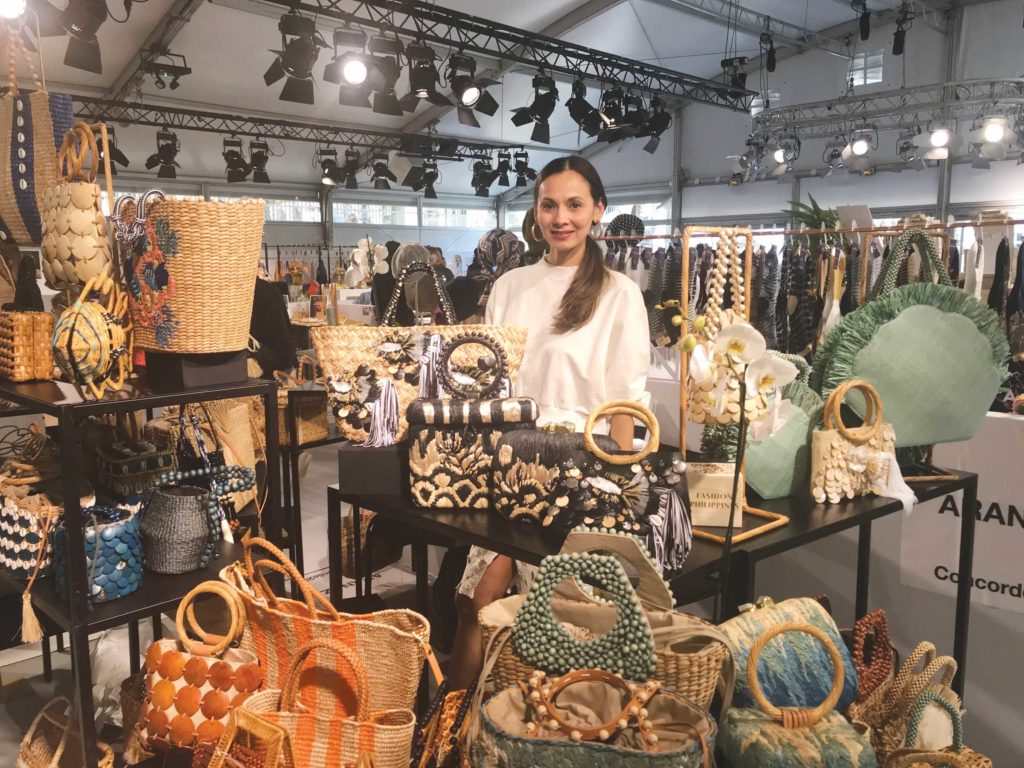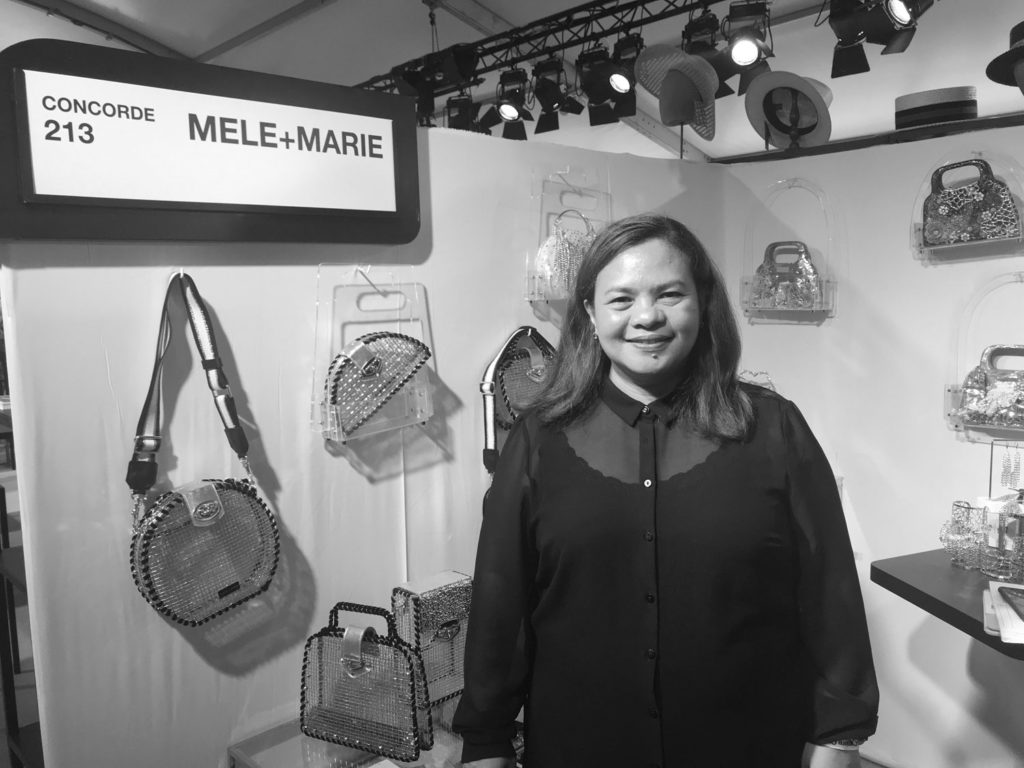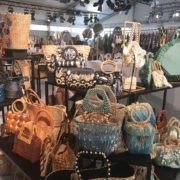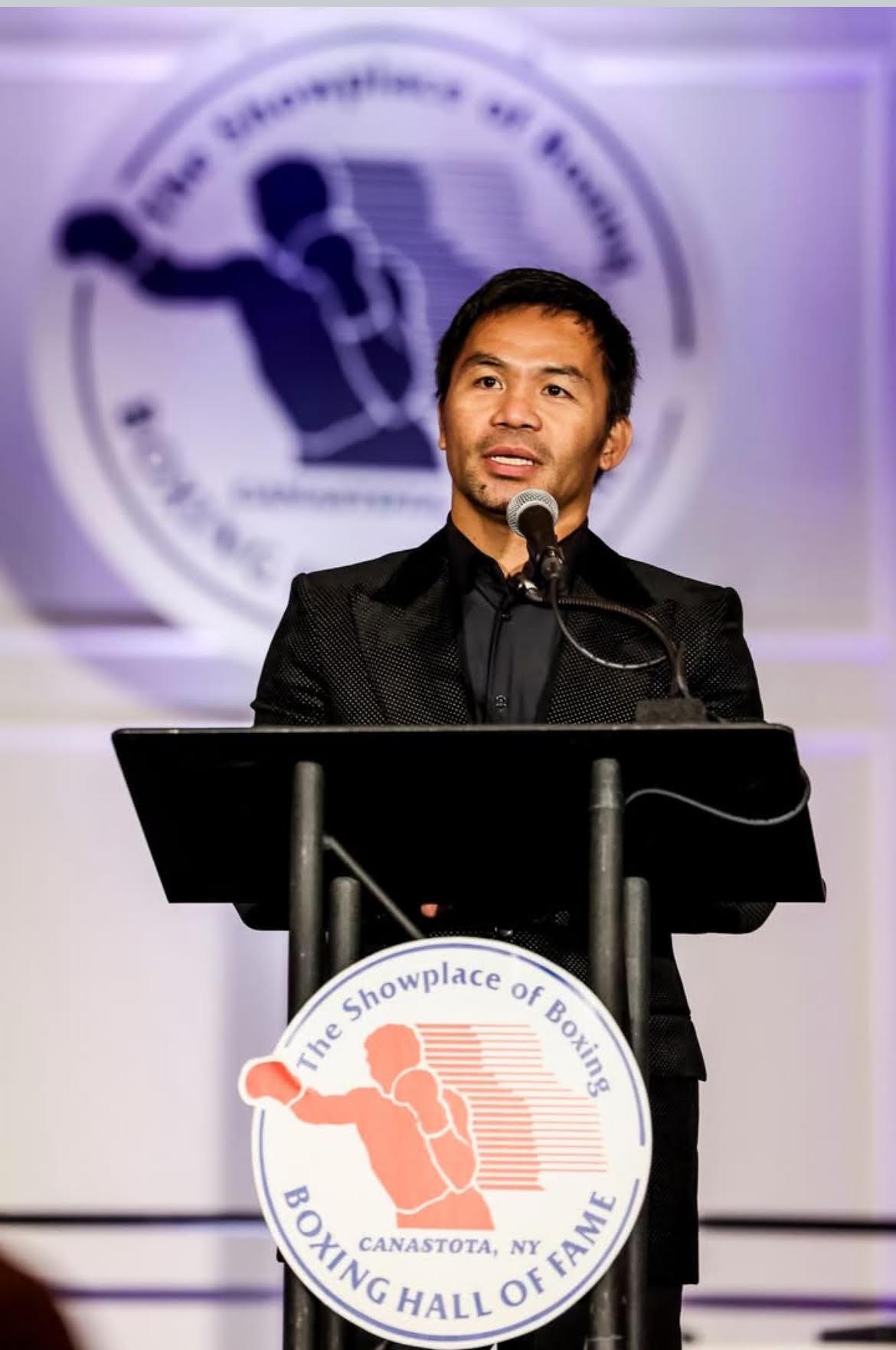I was on my way back to New York from a quick European jaunt when I saw a friend’s Facebook post about Premiere Classe at the Jardin des Tuileries in the heart of Paris. I had eight hours in the city of lights after my train ride from Brussels to catch my flight back to JFK.
Took the RER train from Gare du Nord to the city and found myself back at the Louvre, walked more blocks along Rue St. Honore, ending up near Place de la Concorde where I met up with Rosemarie Oamil, the other half of Mele+Marie, one of the Filipino fashion brands participating in the annual show.

Held annually since 1989 and happening in the midst of Paris Fashion Week, Premiere Classe showcases fashion design and accessories by 450 brands and designers from all over the world, handpicked for their creativity, originality and style.
The international accessories trade show registers over 10,000 visitors each year including buyers and media editors over the course of four days. It is an international platform for fashion accessory designers to present their products in categories that include jewelry, footwear, bags, leather goods and ready-to-wear items.
This year, a group of Filipino fashion accessory and ready-to-wear brands are part of the show, renowned in the fashion world for its curated high quality selection.
Organized by the Department of Trade and Industry’s Center for International Trade Expositions and Missions (DTI-CITEM), the Philippines was represented by Aranáz, Beatriz Accessories, Mele + Marie, Joanique, Zacarias 1925, Merriam Batara and Filip + Inna.

I also saw Rafe Totengco with his eponymous brand Rafe.
In the short time that I had, I was able to have quick chat with some of them.
Aranáz, which was founded by Becky, Amina and Rosanna Aranaz in 1999, has enjoyed a steady local following over the years and continues to gain popularity internationally. The brand’s handmade bags have perfected that signature balance of polished and artisanal while bringing to the spotlight the use of indigenous materials like abaca, raffia, and wicker.
“Our products are all handmade in the Philippines, and our raw materials are sourced from the different parts of the country. You’ll never get a bag that’s sourced just from Manila,” Amina Aranaz told the Asian Journal, as she picked up a bag from her display. “Some parts of this bag, for example, the handle comes from Cebu. This one’s made of woven abaca T’nalak from South Cotabato and the raffia is from Bicol.”
For the show, Aranaz brought their S/S 2020 collection called Fresh Catch. This is the company’s third year to join this show in Paris and brought in about 90 styles for the show.
Aranaz also shared that their family was in the manufacturing business for the past 40 years, supplying to American brands. They started their own brand in 1999 to be able “to bring Filipino brand, not just the products that carry American brands but are made in the Philippines products.”
They keep on returning to Paris to be able to meet the needs of the customers who brought from them in the past and to be able to meet potential new buyers.
“I hope that Filipino brands would rise more and become more popular so that people would see and know that some respectable fashion accessories brands are from the Philippines,” Aranaz said. “I always say that our brands are our way of sharing Filipino culture to the world, that’s who we are and that’s what we do best. You can become stylish while using products that are meaningful and different from mass market products.”
Mele + Marie’s roster of elegant purses made their way to Premiere Classe as well and the family behind the brand was in full force in Paris.

Created by the husband-and-wife team of Melecio and Rosemarie Oamil, the brand’s bags boast refined artistry through the use of iridescent abalone shells and lightweight acrylic.
The couple, along with their daughters took the opportunity to showcase their wares in Paris and planned a vacation, visiting the countryside after the four day trade show.
Jewelry designer Merriam Batara, founder and head designer of her eponymous label, comes from a family with a background in crafting fine jewelry and hand-beaded accessories. Her work emphasizes the immense detail and precision of hand beading, as seen in her collection of shoulder-grazing earrings.
Batara is grateful for the opportunity to showcase her designs in Paris for the very first time and put the spotlight on Filipino artistry through her hand-beaded and embroidered accessories. She is immensely proud that a simple woman like her from Bulacan is able to compete with the giants in the global market.
“Dati parang wala kang chance pag nasa province ka, but because of the internet, mas naging level ang playing field,” she told the Asian Journal.
“Showcasing Filipino creativity and craftsmanship in Paris through our handcrafted collection—amongst the best of the best in the world to the most prestigious markets—is a dream for us, and Premiere Classe is the stage to make that all happen,” shared Batara. “We are so proud of our products, all unique and handmade and we make sure that every single detail is looked after.”
Batara’s boho-luxe tasseled earrings have become a signature of the brand and for her Spring/Summer 2020 collection, the designer took a decidedly fresh turn. Inspired by the flora and fauna of the Philippines, the earrings, cuffs, and other jewelry in this collection are made with a mix of freshwater pearls, gold-dipped shells and metal hardware, gemstones, woven indigenous fabrics, chains and glass beads that all come together through beading, hand-embroidery and wirework.
Filip + Inna’s Lenora Cabili, on the other hand, lives by her mission of preserving and promoting the age-old techniques and garments of the Philippines’ indigenous groups through her clothing line.
Her latest collection seamlessly combines indigenous weaves, patterns and traditional garb reimagined through contemporary silhouettes like chic separates and breezy tunics. Embroidery and beadwork techniques from the T’boli, Tagakaolo and B’laan ethnic groups based in Mindanao, where Cabili grew up, are also celebrated through key pieces in the collection.
For Cabili, presenting abroad is more than just the sale of her brand’s products.
“Selling our collection to the international market has been a most rewarding experience,” she shared. “The opportunity to show the world a side of the Philippines that not a lot of people know about is an honor and responsibility I am most grateful for. We are defining and creating a visual of the Filipino culture through the garments produced by the indigenous groups.”
For four days in Paris, these Filipino brands had meetings with repeat and potential clients and showcased the best of artisan Filipino craftsmanship to the fashion community. Tirelessly, the men and women behind thes brands promoted not just their own products but Filipino design in general.






